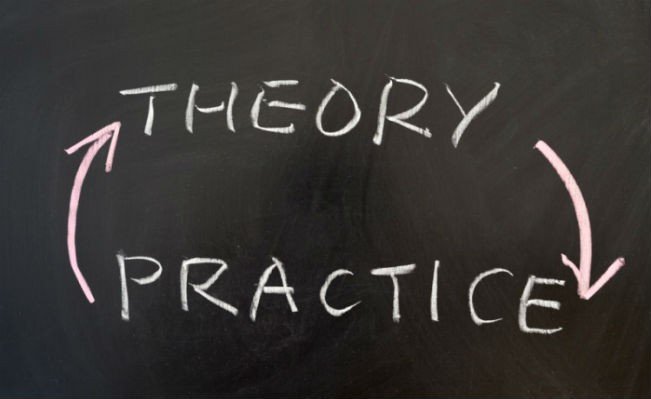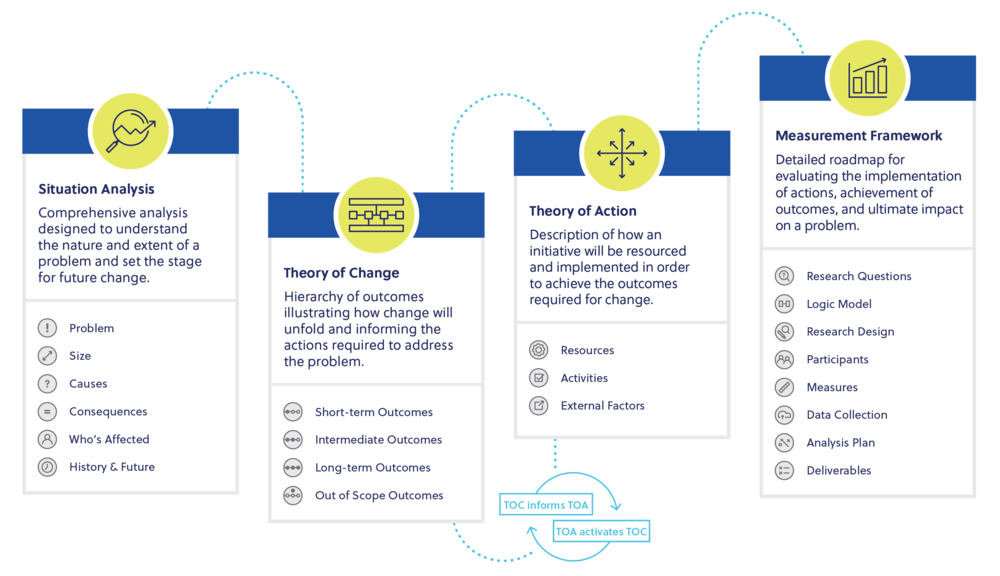Program Theory: What It Is and Why Your Organization Might Need It!
Have you or your organization ever created a new program, released a new product, or launched a new initiative? Chances are the answer is yes!
Program theory can be a very useful tool for any organization looking to create or optimize their programs, products, or initiatives.
If you have, you may have benefited from implementing a program theory process to guide your decisions and inform your actions. Program theory is an approach used to determine and describe how an initiative will lead to a chain of desired outcomes in order to address a problem or need. This approach rests on the assumption that new programs, products, and initiatives should be developed and implemented to address specific problems, needs, or gaps that exist in organizations or communities.
Program theory processes can be very beneficial to organizations looking to create or update programs, products, or other types of initiatives. Specifically, they can help stakeholders determine and align assumptions, develop a shared understanding of the need, document specifications as a basis for funding, make it easier to identify successes and challenges, and ensure decisions are based on a complete and consistent set of information.
At Category One Consulting (C1C), we use a cohesive and evidence-based four-step process to develop program theories. These four steps, which are illustrated and described below, are often implemented using participatory and inclusive processes with our clients.
Situation Analysis is a comprehensive analysis designed to understand the nature and extent of a problem or need in order to set the stage for future change. It focuses on answering the question “what problem are we trying to solve” by understanding the components of a problem including the size of the problem, the causes of the problem, the consequences if the problem is left unsolved, who is affected by the problem, the history of the problem, and potential future scenarios of the problem if it is unaddressed. This comprehensive analysis, which digs deep to fully understand the problem that the new program or product seeks to address, lays the foundation for all future stages of the process. At C1C, we partner with our clients to identify the optimal data sources that will provide insight into the problem, need, or gap. We then gather data from a variety of sources such as historical data from archival sources and new data from interviews, listening session, focus groups, surveys, and assessments. We analyze all of this data using a variety of quantitative and qualitative methods. We then pull out the critical insights that tell a story of the data in order to set the stage for building a Theory of Change.
Theory of Change is a hierarchy of outcomes illustrating how change will unfold and informing the actions required to address the problem. It focuses on answering the question “what does good look like” by documenting the if-then chain of short-term, intermediate, and long-term outcomes as well as the outcomes that are considered out of scope. An accurate Theory of Change will clearly define the outcomes that will be achieved if the problem is addressed by the new program, product, or initiative starting with those immediate, or short-term, outcomes and ending with those ultimate, or long-term, outcomes. At C1C, we often use facilitated workshops to collaboratively identify outcomes, map out the hierarchy, and ultimately build the Theory of Change. We then document the hierarchy in a clear and compelling Theory of Change model that can be used to inform the Theory of Action.
Theory of Action is a description of how an initiative will be resourced and implemented in order to achieve the outcomes required for change. It focuses on answering the question “how do we get there” by identifying an initiative’s resources, activities, and external factors. A Theory of Action activates the Theory of Change by determining the resources (e.g., finances, assets, people) that will be needed to implement the activities (e.g., policies, programs, services) required for change. It also proactively recognizes the conditions or stimuli (e.g., government, economic, sociopolitical) that could influence the initiative's success. At C1C, we use participatory methods to document all of the resources that will be needed, activities that will be implemented, and external factors that may help or hinder success. We then display these elements in a Theory of Action model that can be used to support implementation and inform future evaluation.
Measurement Framework is a detailed roadmap for evaluating the implementation of actions, achievement of outcomes, and ultimate impact on a problem. It focuses on answering the question “how will we know it worked” by specifying the elements required for future measurement and evaluation. Specifically, a complete measurement framework outlines the research questions that will be addressed and pulls together elements of the Theory of Change and Theory of Action into a succinct logic model. It also lays out the specific elements of an evaluation plan including the research design, participants, measures, data collection procedures, and analysis plan as well as the deliverables that will be developed at the conclusion of the various stages of measurement. At C1C, we work with clients to identify their needs and preferences related to measurement and build a measurement framework that is on par with the scale of the investment of the initiative. We also often support the implementation of the evaluation by gathering, analyzing, and reporting the data so our clients, and their stakeholders, know that the Theory of Action was implemented with fidelity, the Theory of Change was achieved, and the initial problem, need, or gap was addressed.
Program theory can be a very useful tool for any organization looking to create or optimize their programs, products, or initiatives. If you would like more information about program theory or are interested in partnering with Category One Consulting to implement a program theory process, feel free to reach out!


